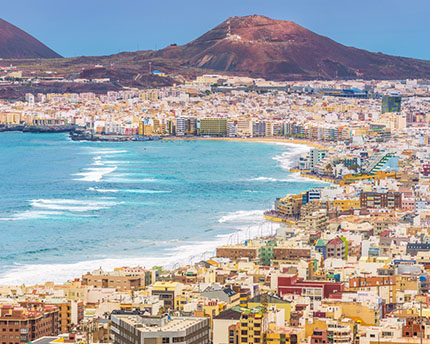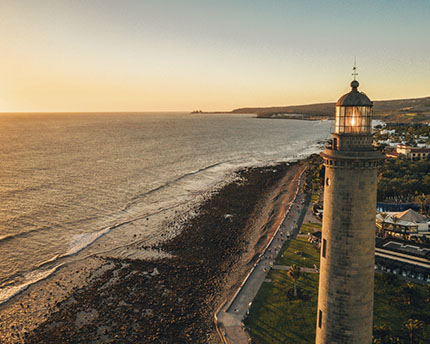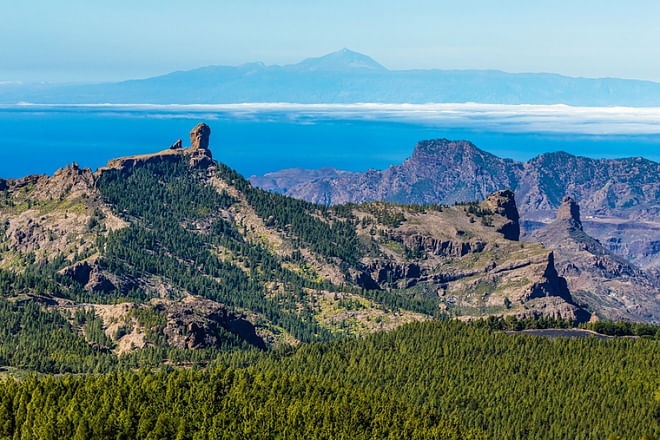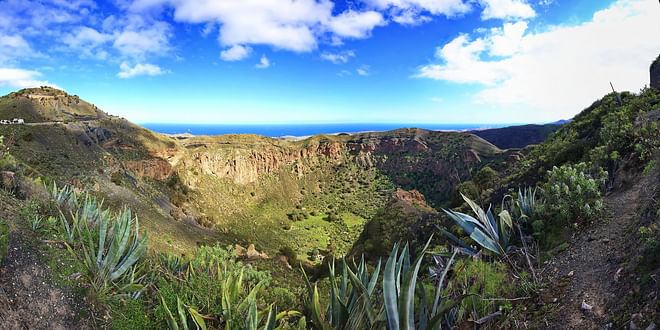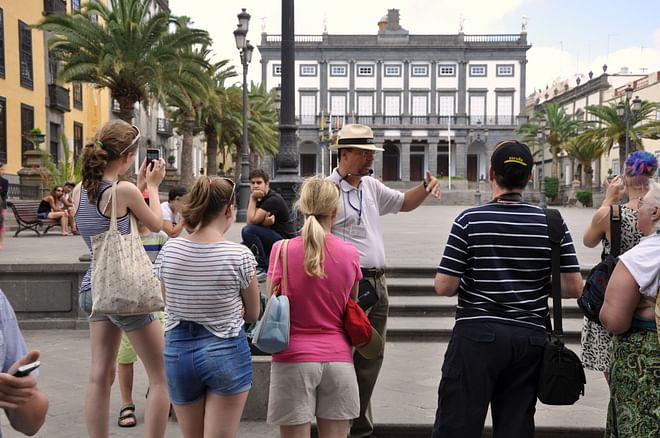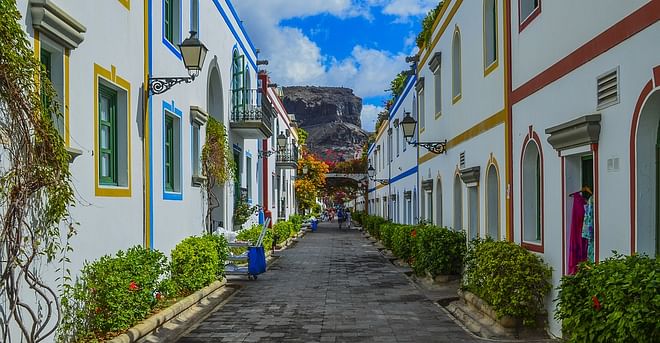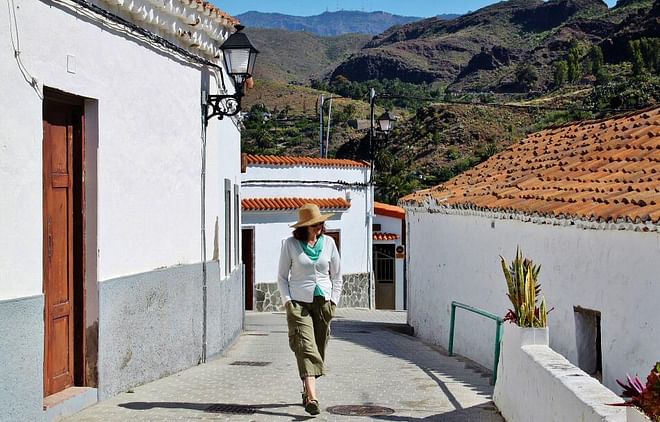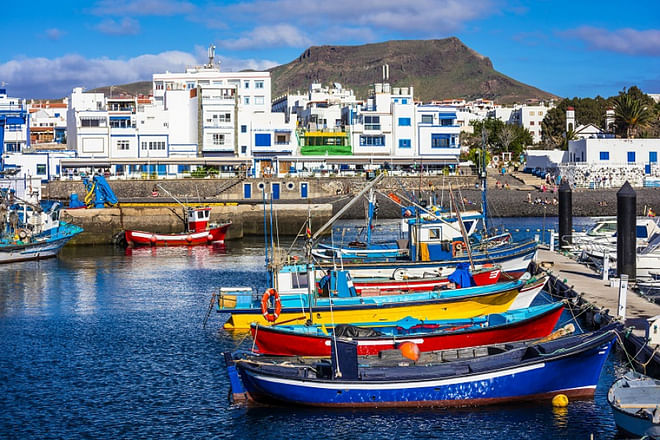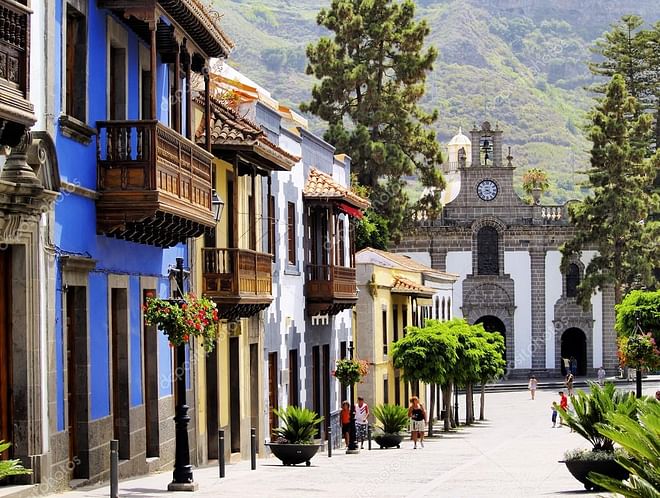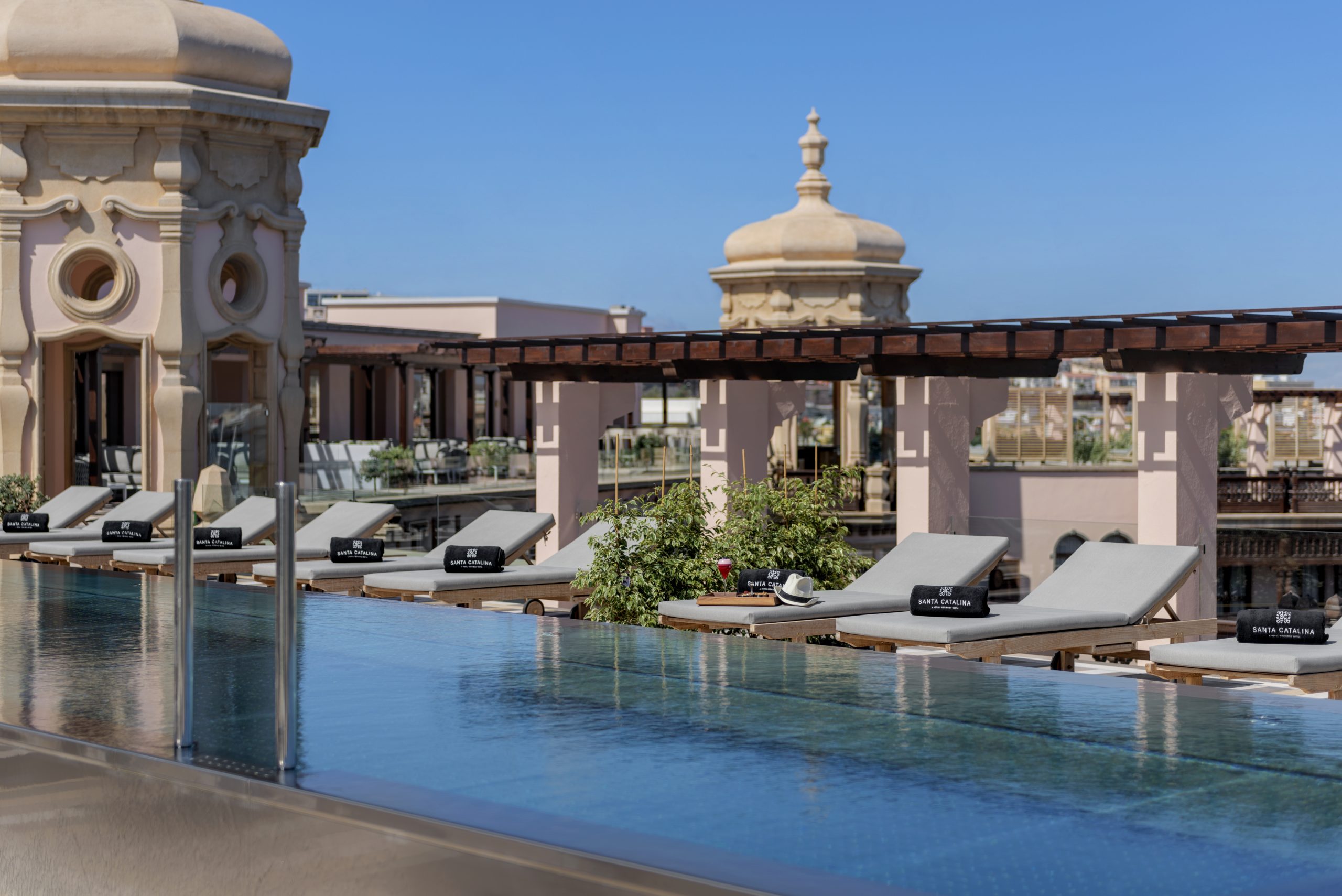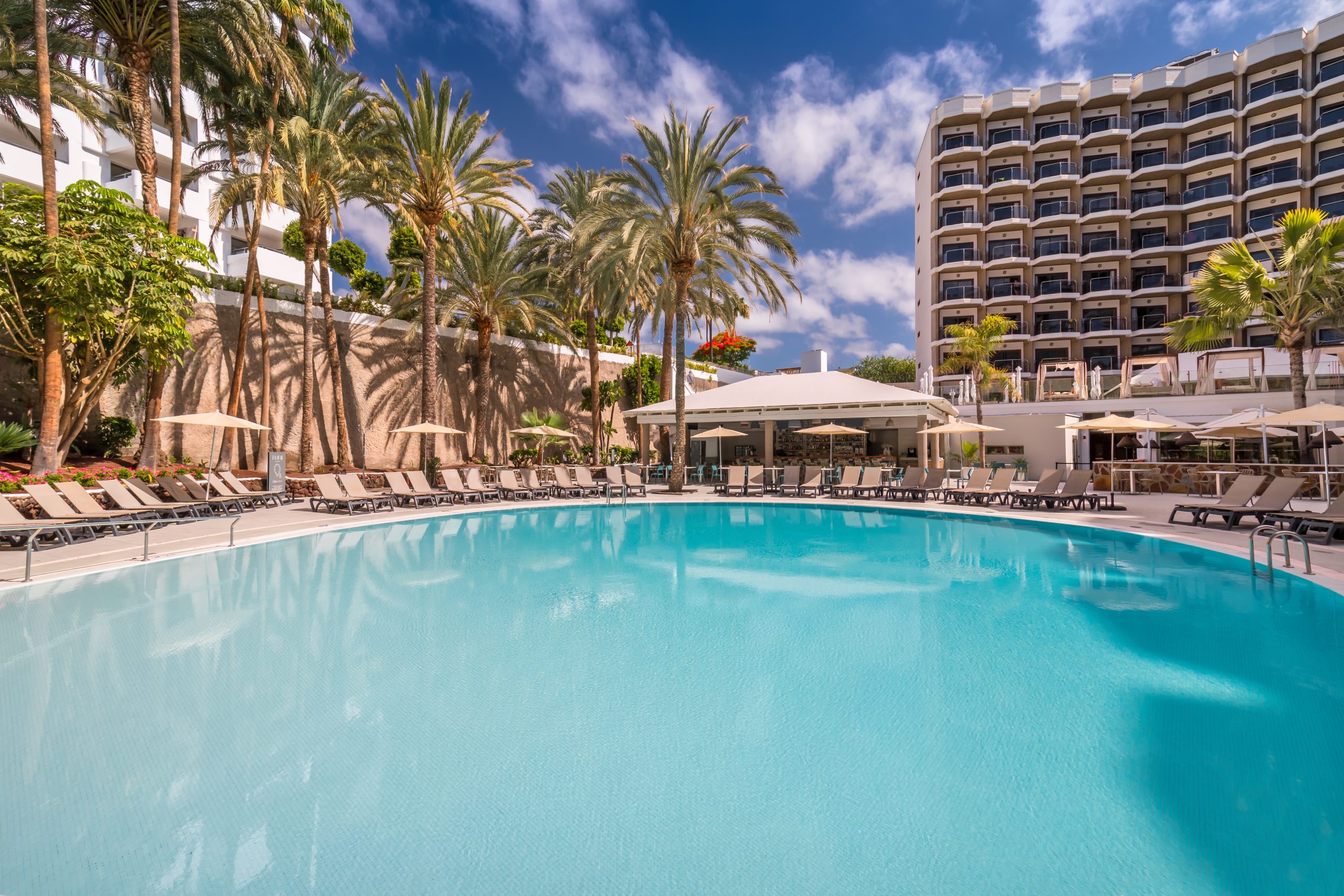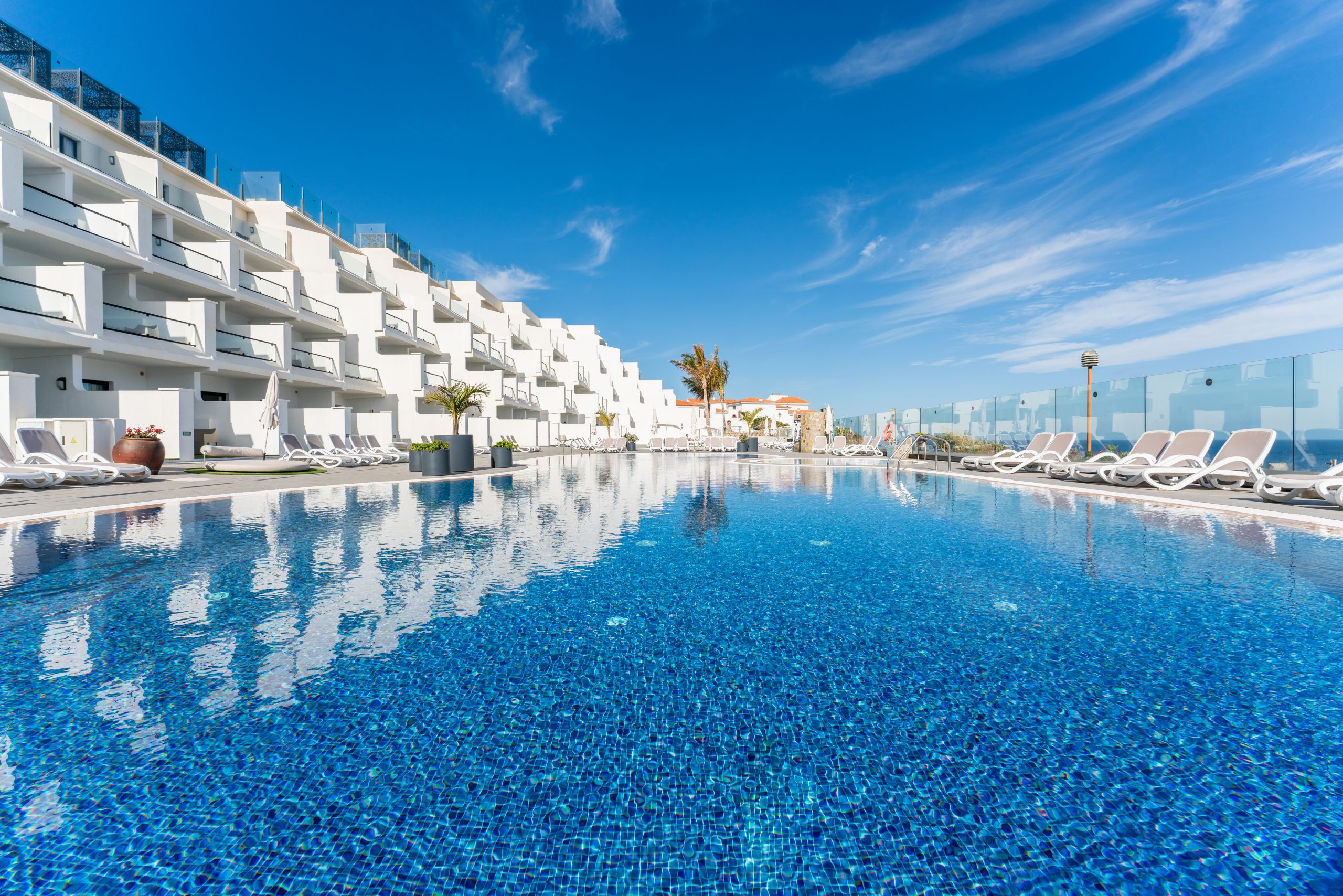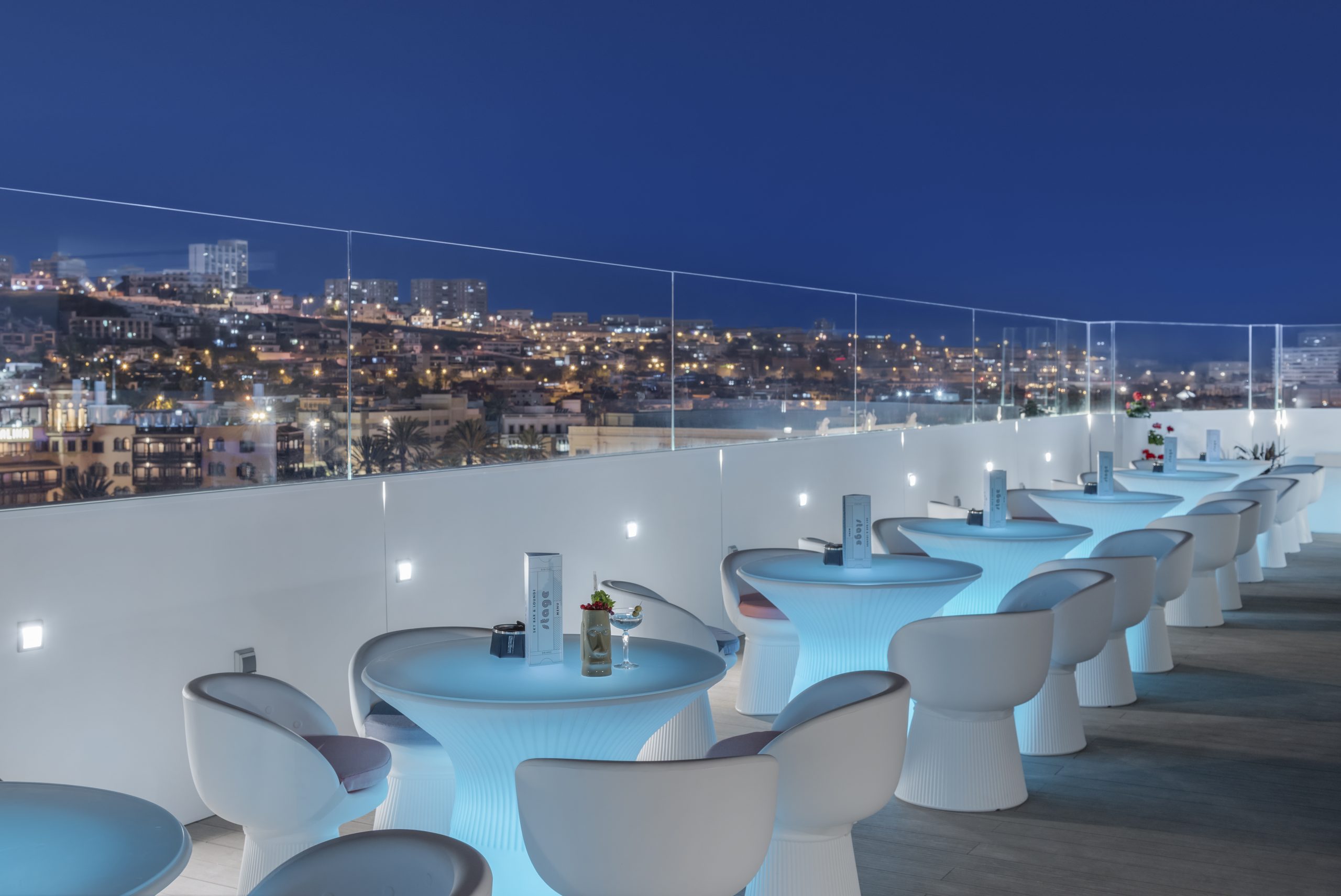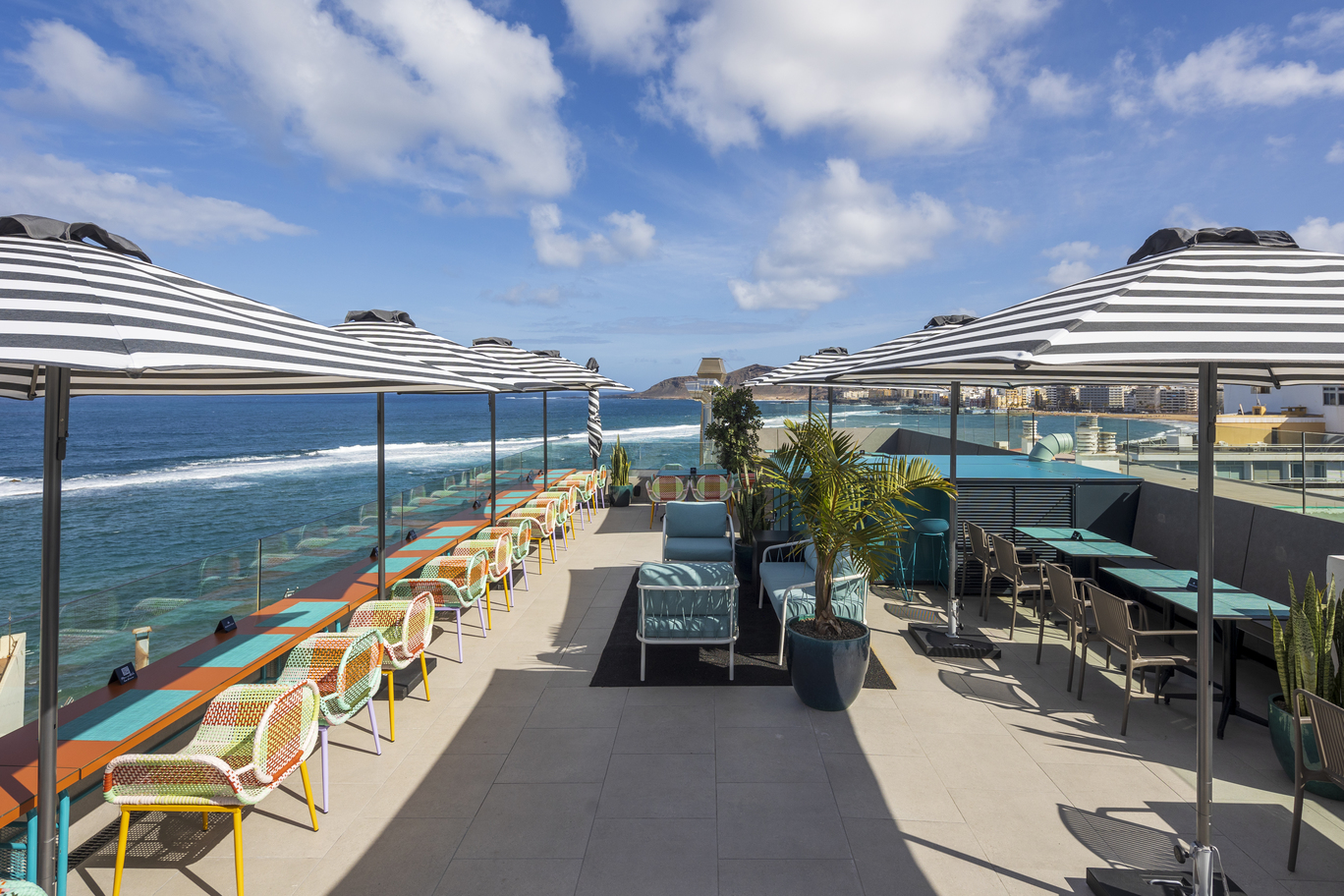The first settlement in the Spanish conquest of Gran Canaria was built after Captain Juan Rejón arrived here in 1478, sent by the Crown of Castile. His troops set up camp in the Barranco del Guiniguada and used three huge palm trees to signal their location to the boats. Hence, the camp soon became known as Real de Las Palmas. They built a wall along with what would become one of the most important ports in the Spanish Empire: Puerto de la Luz, a key stopping-off point in the middle of the Atlantic Ocean for provisioning boats.
The population remained within the walls for centuries, creating in essence what was the island’s first urban hub or neighbourhood. Its cobbled streets are lined with pretty colonial buildings, historical houses, small chapels and plazas surrounded with lush vegetation and black stone. The settlement was the scene of pirate invasions by the likes of Francis Drake and Van Der Does, and looked on as the ships La Niña, La Pinta and La Santa María set sail for the New World.
In Vegueta, Christopher Columbus asked for the governor’s assistance to repair his ship La Pinta on his return voyage. The settlement was also the main trading point for products from America and Spain. The first potatoes from the New World came to Vegueta before being exported all across Europe, and it was from here that the first banana and sugar cane seeds left for the Caribbean, along with pigs, goats and dogs.
Vegueta: what to see and do
Vegueta’s old town has some of the prettiest and most emblematic buildings on the entire island. First off is the Catedral de Santa Ana. The original building works began in 1497 but weren’t completed until the 20th century. It’s also knows as the ‘Catedral de Canarias’, given it was the only cathedral on the whole of the archipelago until the 19th century. The length of time it took to complete the cathedral resulted in a blend of architectural styles including Neoclassical, Gothic and Renaissance. The Patio de los Naranjos was added in the 17th century. This cloister with wooden balconies is one of the few remaining of its type in Spain and was the home of the local clergy. The cathedral’s towers provide views all across the historical neighbourhood (there’s a small charge).
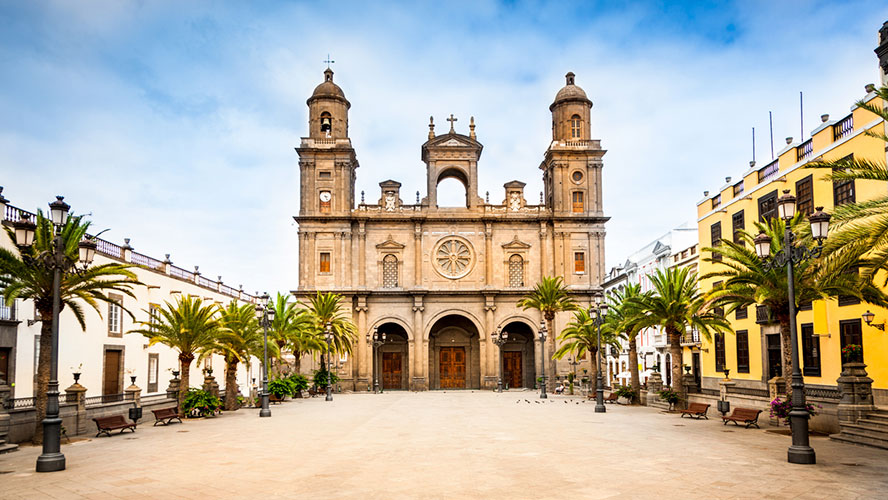
The cathedral sits within Plaza de Santa Ana alongside other important buildings including the Town Hall, the Historical Archive, the Casa Regental and the Palacio Episcopal. The eight mysterious cast iron dogs of unknown origin are undoubtedly the most characteristic feature of the plaza. The initials on the sculptures are misleading since they could belong to either of two sculptors around at the time. The most popular theory is that the dogs were gifted to Mayor Felipe Massieu by a French captain after the good treatment received by him and his crew during their stay on the island.
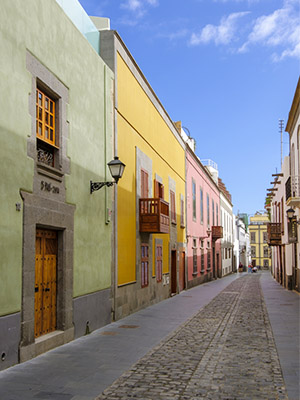
Plaza del Espíritu Santo, in the most aristocratic part of Vegueta, is surrounded by townhouses and fine buildings. Nearby Calle Castillo and Calle Doctor Chil boast a great many old stately homes. The centre of the plaza is adorned with a roofed stone fountain – not a very common feature in Spain – alongside which is a huge Canary Islands dragon tree next to an araucaria, together the symbol of the union between the Canaries and America.
The oldest parts of Vegueta are Plaza de San Antonio Abad and its chapel, the first in the city and the place where Christopher Columbus prayed before continuing his voyage to America. In front of the chapel is the Casa de Colón (House of Columbus), though don’t be fooled by the name as Columbus never lived there. The building is a grouping of four houses dating back to between the 16th and 18th centuries. One once belonged to the famous tenor Alfredo Kraus, and another to the governor who helped Columbus to repair his ship La Pinta. The other side of the museum looks onto Plaza del Pilar Nuevo, where women would gather to collect water from the central fountain.
Vegueta has several cobbled plazas with charming fountains and tropical vegetation. Among them is Plaza de Santo Domingo, a popular meeting place with benches shaded by trees and which provides a venue for local celebrations. If the streets could talk, they’d tell of colonial times when pirates and traders moored their boats in the port, and conquistadors stopped to gather provisions before setting sail for the New World.
Calle de los Balcones is a street frozen in time. It has the oldest houses in the neighbourhood, boasting 15th-century facades and patios from the time when the city was founded. One of its most outstanding buildings is the Centro Atlántico de Arte Moderno, a modern art museum with original period features. There are around 2,600 pieces in its permanent collection. If you’re interested in the history of the native people who lived here before the conquistadors arrived, visit the Museo Canario. It also has one of the most extensive exhibitions on Prehistory in the world.
Restaurants and markets in Vegueta
Calle Pelota and Calle Mendizábal are right in the heart of Vegueta and have the biggest concentration of restaurants, bars and terraces offering the best selection of local cuisine at prices that won’t blow your budget. On Thursday evenings, islanders and tourists alike descend upon Calle Mendizábal for a tapas crawl, sampling the best morsels on offer washed down with a drink, and all at decent prices. After 8 p.m. the street turns into a popular hangout with the local youth, especially in summer. The Thursday night tapas crawl has become a local tradition.
The Mercado de Vegueta, next to Calle Pelota, is one of the oldest markets on the island. It sells all manner of fresh vegetables and tropical fruit. Wander around its colourful stalls and let yourself get lost in Vegueta.






























































